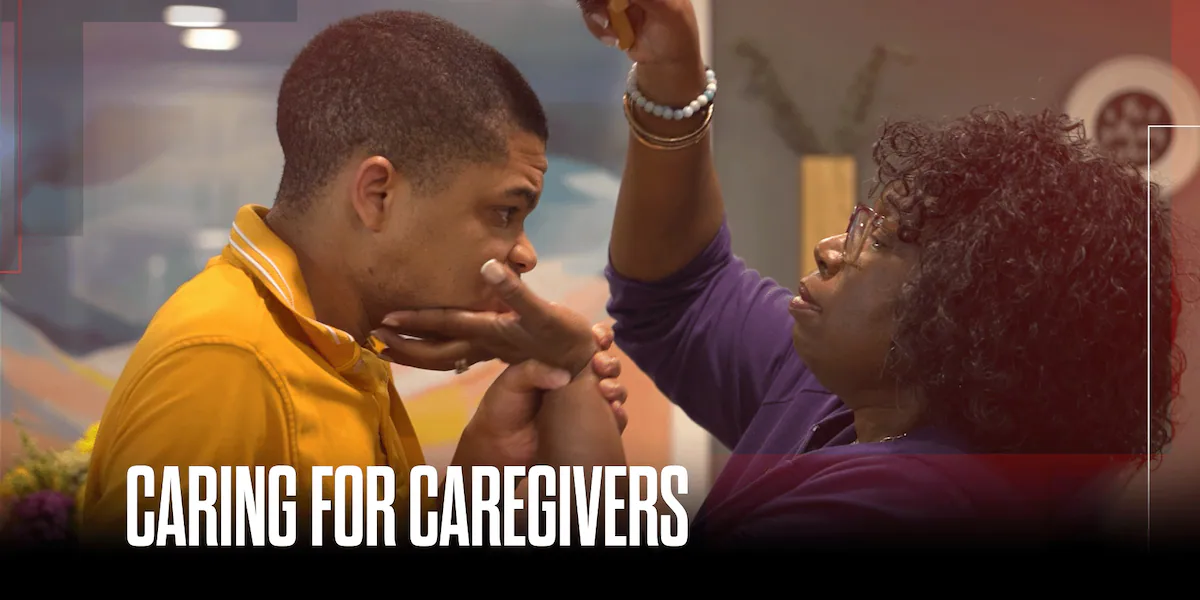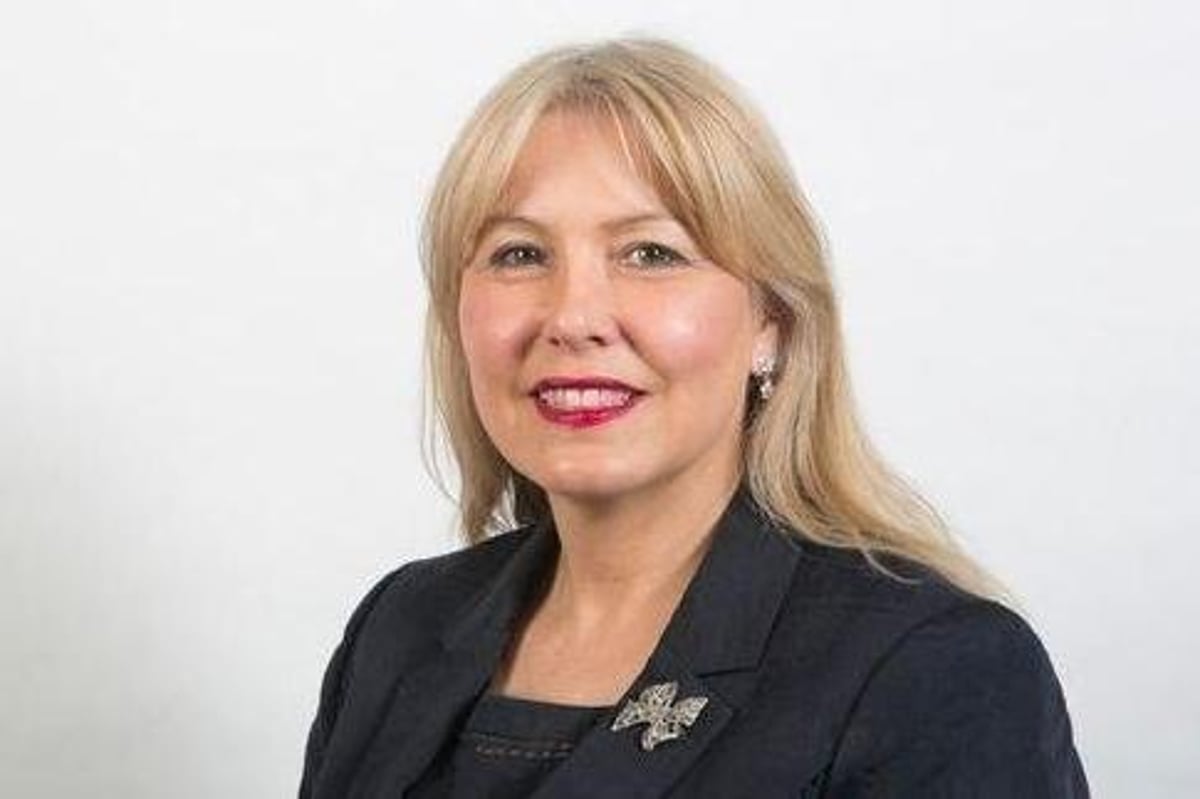Copyright WEAU

(InvestigateTV) — Caregiving for a loved one is not just a good deed. It’s a public health issue. New research reveals that one in four U.S. adults currently serves as a caregiver for a relative with complex medical needs. Most family caregivers are unpaid, but advocates say this “invisible workforce” in healthcare is desperate for help. Daily reality of dual caregiving It’s just past 6 a.m. on a rainy morning in Maryland, and Pamela Talley has been awake for hours. She’s cooking, cleaning, prepping, packing and generally going nonstop because once her son is awake, he’s the priority. Zander is autistic and has minimal language skills. His daily routine is largely reliant on his mom. Yet even after Zander boards the school bus, for Pamela, there is no time to waste. She’s a caregiver not just for her child, but for her husband as well. Kenneth Talley has Alzheimer’s disease. “It’s having to be everything to everyone,” Pamela said. By 8:30 a.m., Pamela’s focus has shifted to her spouse’s medication management, blood pressure monitoring, upcoming doctor’s appointments and personal grooming like shaving Kenneth’s face. All of it now falls on Pamela. “I have a lot on my plate, I do,” she said. Diagnosis changes everything The family photos that are ever-present in this house are a reminder of what was before they got Kenneth’s diagnosis two years ago. “It took my breath away, honestly,” Pamela said. When asked if she worries there will come a day when he won’t know who she or their children are, she said yes. “He was my co-pilot, you know? We were co-pilots in this life together. And I thought, how many more memories are we gonna have? Am I going to support the whole family through this? And there was just so much to get done,” she said. Such is the demanding life of a family caregiver. As of 2025, the National Alliance for Caregiving says 63 million Americans are doing just that. This new report warns of a “dramatic increase” in the number of caregivers nationwide, up by 20 million since 2015, as people are living longer and the U.S. population is aging. “Absolutely, there’s an urgent crisis in this country,” said Jason Resendez, NAC president. Resendez says the organization’s research also revealed that family caregivers are stretched thin. Despite having virtually no medical training, they spend on average 27 hours a week caring for loved ones with chronic health conditions, allowing them to age at home and avoid costly long-term care facilities. Meanwhile, emotional and economic strain are widespread among the caregivers themselves. “Nearly half of family caregivers have experienced one negative financial impact because of their caregiving responsibilities, like going into debt or reducing savings or even leaving the workforce due to caregiving,” Resendez said. Financial burden grows Pamela knows that struggle because she stopped working years ago when it became clear her son needed more support, and her husband is now retired. “We started to have to use our retirement savings. Here comes the slow trickle. Caregiving is very expensive,” she said. “If the faucet just stays on, it’s just going to run out,” she said. An AARP study found that family caregivers spend an average of $7,242 annually on out-of-pocket costs related to caregiving. “We definitely spent more over the years. When you think about safety equipment, adaptations, bringing in help, day programs, the cost can be a lot higher than that,” Pamela said. Bipartisan support for federal tax credit “One of the key challenges that family caregivers face is a lack of supportive infrastructure. From a healthcare perspective, from an economic perspective, from a mental health perspective, we need a regime of policies,” Resendez said. One policy the NAC supports is the ‘Credit For Caring Act’ that has been repeatedly introduced on Capitol Hill. It would provide a nonrefundable federal tax credit up to $5,000 for eligible family caregivers. Democratic Representative Linda Sanchez and Republican Senator Shelley Moore Capito are among the bill’s bipartisan cosponsors. Both lawmakers helped care for their own elderly parents with Alzheimer’s. “I know from my own personal struggle, wanting to do it the right way. And so it became incumbent upon me and my brother, and my sister to care for them. Well, you can imagine we’re all in different places. It became very expensive,” Capito said. “I come from a family of seven children. So when you divide the financial responsibility and the caregiving responsibility among seven, it’s much more manageable. But many families don’t have that luxury,” Sanchez said. The federal proposal has not advanced, but Oklahoma, in 2023, became the first state to adopt a comprehensive caregiver tax credit up to $3,000. Nebraska passed similar legislation in 2024. “The state work is critical. A lot of times we see different pockets of states supporting tax credits or other legislation, and it really becomes a movement. But it may just take longer than if we’re able to get something on the federal side. But ideally, we would have both,” said Rachel Conant with the Alzheimer’s Association. For Pamela, it’s still a constant juggle between her husband and son, but since Kenneth is a veteran, they eventually secured some in-home assistance through the VA. It’s a stopgap for this family, but not a solution. “It’s been a pretty tough road,” she said. On behalf of all caregivers, she says it’s past time for this country to act. “We have to start somewhere. We’re all going to be touched by the caregiving experience one way or another. They deserve our support. They need our support,” Pamela said. Multiple solutions needed The Center for Retirement Research at Boston College has studied potential support policies for family caregivers, including tax credits, paid family leave, paid respite care, reimbursement for out-of-pocket costs or direct payments from the government. The center recently surveyed caregivers about what type of support would help the most and found 44% would prefer assistance in the form of direct payments. The next most popular option was reimbursement for out-of-pocket costs. According to the national advocacy group Justice in Aging, state and federal lawmakers need to be thinking big. “I don’t think it’s just one solution. We need many solutions, like improving the availability of at-home care through the Medicare program. And then there’s also social insurance type options that go beyond Medicaid and Medicare, like that we see in Washington state,” said Amber Christ with Justice in Aging. Washington state has a first-of-its-kind long-term care insurance program that’s funded through a payroll tax. Submit story tips to our Investigators Share errors or concerns with our Digital Editors Watch full episodes of InvestigateTV+ Subscribe to the InvestigateTV YouTube Channel



